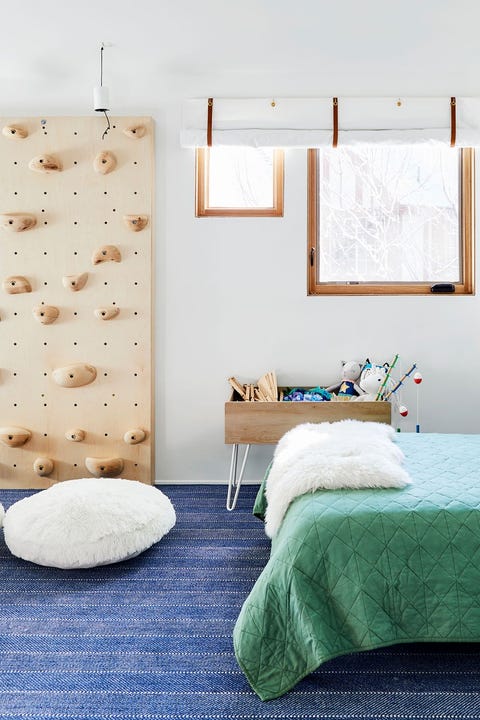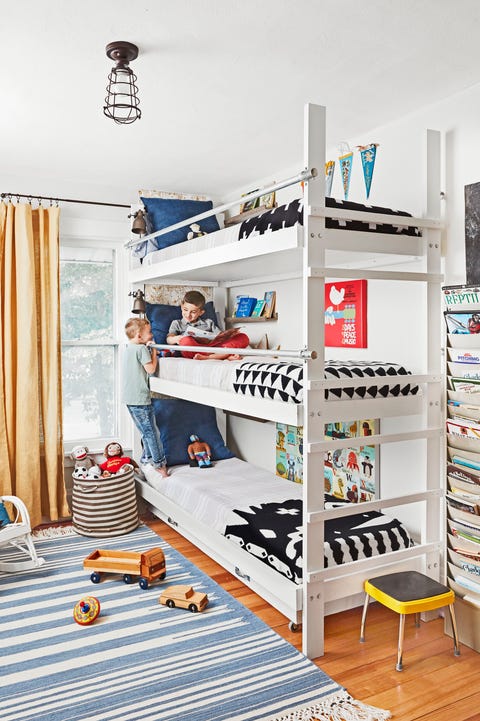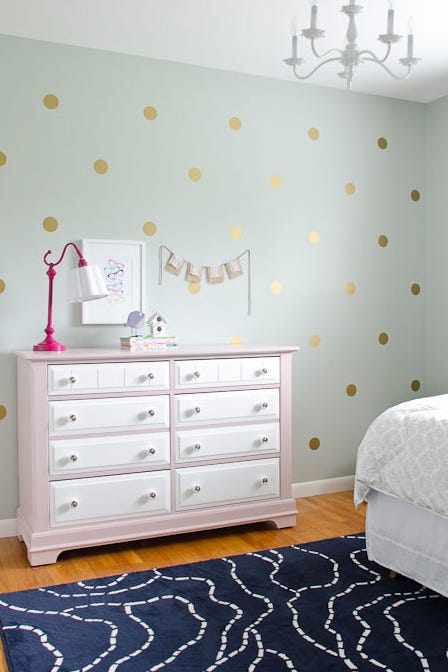How Quickly Will I Get Results Of Gel Testosterone Ftm
Summary
There is sparse prospective data on the effects of testosterone therapy on the voices of transgender men (also referred to as trans men or female-to-male transsexuals). Our aim was to investigate the timing and degree of voice deepening over 12 months among an ethnically diverse sample of transgender men. This was a prospective 12-month study at an academic outpatient endocrinology clinic and speech and voice center. The participants were seven transgender men naïve to testosterone therapy. All patients received two voice assessments at baseline and one assessment at 3, 6, 9, and 12 months while on intramuscular testosterone esters. Serum testosterone and estradiol concentrations were measured at baseline and every 3 months. All seven transgender men reached a cisgender male mean fundamental frequency (MF0) within 6 months of testosterone therapy and four continued to experience a decrease after 6 months. The mean decrease in MF0 after 12 months of testosterone therapy was 6.4 semitones (49 Hz). Several patterns emerged regarding the extent and timing. For example, some participants showed no decrease in MF0 within the first 3 months of testosterone therapy, whereas others showed their greatest decrease in MF0. We concluded that transgender men who start testosterone therapy display different patterns of voice lowering. Clinicians should counsel transgender men that they may or may not experience voice lowering within the first 3 months of testosterone therapy and that the majority of voice deepening will occur within 6–9 months.
Introduction
Treatment with testosterone represents the principal medical therapy for many transgender men (also referred to as trans men or female-to-male transsexuals) to promote masculinization. In addition to identifying as male, most transgender men desire to be perceived as male by society. One of the most desired effects of testosterone therapy is a lowering of the mean fundamental frequency (MF0) of the voice to that of cisgender (also referred to as non-transgender or natal) males. Although the widespread belief that transgender men taking testosterone achieve a desired voice without voice therapy is not without exception (Davies et al., 2015), the high rate of success contributes to an assumption that the same physiological changes that occur in the larynx during puberty occur when transgender men take testosterone. The effects of testosterone are considered irreversible.
Although the effects of testosterone therapy on the transgender male voice are well recognized, there is sparse prospective data regarding the timing and degree of the voice deepening. A few small studies suggested that testosterone's effects on the transgender male voice begin within 2–4 months of initiation of therapy (Van Borsel et al., 2000; Damrose, 2009). A longitudinal study of two transgender men treated with long-acting intramuscular testosterone undecanoate for 12–13 months found that MF0 during reading dropped most significantly between 2 and 4 months. The MF0 of one subject decreased but leveled at 155 Hz (D#3) by 8 months and it decreased to 132 Hz (C3) but had not yet leveled off by 12 months in the other subject (Van Borsel et al., 2000). For comparison, the MF0 while reading is approximately 200–225 Hz (G#3) for cisgender females and 100–130 Hz (A2) for cisgender males (Brown et al., 1993; Morris et al., 1995; Howard & Murphy, 2008; Colton et al., 2011). Similarly, a 16-month study of a 33-year-old semiprofessional singer found that the transgender man experienced a marked decline in fundamental frequency between the third and fourth months of testosterone therapy (Damrose, 2009). This subject, however, experienced no voice deepening after that period. The earliest that voice changes from testosterone therapy have been reported was in a 22-year-old hypogonadal man who happened to be a professional singer (King et al., 2001). He recalled that he began to perceive changes to his voice within 2 weeks of starting testosterone therapy.
Up until recently, the lack of a prospective voice study of three or more transgender men with testosterone therapy likely relates to the paucity of transgender patients among most endocrinologists and the need to collaborate with a speech and voice center (Irwig, 2016). A study by Deuster et al. (2016) prospectively assessed acoustic voice deepening in nine of 15 transgender men who completed 1 year of study while receiving testosterone. The subjects averaged a decrease in almost nine semitones (ST) over primarily the first 9 months and achieved a level equitable to cisgender males (Deuster et al., 2016). The first statistically significant changes in speaking fundamental frequency occurred within the first 2 weeks of testosterone therapy. Percentile curves generated from this small data set assumed voice deepening minimized over time and calculated the few missing values using a linear trend. The authors noted individual differences in response to treatment (e.g. slow performer, sigmoid function, rapid change).
The largest longitudinal voice study on transgender men is a retrospective study at Karolinska University Hospital of patients who had voice assessments before and during testosterone therapy for 24 months (Nygren et al., 2016). Fifty subjects had baseline voice data with follow-up data available for 36 subjects at 12 months and 22 subjects at 24 months. Voice assessments were grouped at 3 (2–5), 6 (5–10), 12 (11–15), 18 (16–21), and 24 (22–36) months and there was some missing data as not all subjects came to all visits. The majority were treated with long-acting intramuscular testosterone undecanoate (1000 mg every 8–12 weeks) with the remainder treated with intramuscular esters, transdermal gels, or a combination of therapies. The average MF0 during reading decreased by eight ST within the first year: 192 Hz before treatment, 155 Hz at 2–5 months, 134 Hz at 5–10 months, and 125 Hz at 11–15 months. The largest drop (i.e. 4 ST) was seen during the first 2–5 months and no significant decrease was seen between 12 and 24 months. Objective data correlated well with questionnaire data regarding perception of male by others when speaking on the phone. Although the majority of transgender men were satisfied with their voice at 12 months, 24% received vocal therapy because of symptoms of vocal fatigue, vocal instability, strained voice quality, insufficient lowering of pitch, voice projection difficulties, and problems with the voice sounding younger than the subjects' chronological age.
The effects of long-term administration of testosterone on voice parameters has been described in a cross-sectional study of 38 transgender men in Belgium with a control group of heterosexual cisgender males matched for age and smoking status (Cosyns et al., 2014). The mean duration of testosterone therapy for the group of transgender men was more than 10 years and the majority were current (n = 13) or former smokers (n = 12). As compared to the controls, transgender men showed no differences in any of the variables studied which included median F0 during reading, counting, and sustained vowel production; pitch variation, jitter, and shimmer. However, the median F0 during reading revealed more heterogeneity in the transgender men group. Although most transgender men could not be distinguished acoustically from cisgender men, the study found that 10% of transgender men had pitch-lowering difficulties. Two subjects had a MF0 in a gender ambiguous range when reading and two subjects underwent voice therapy and/or surgery.
Given the paucity of prospective data on the effects of testosterone on the transgender male voice, we sought to investigate the timing and degree of voice deepening over 12 months among an ethnically diverse sample of transgender men who did not receive any speech or voice therapy.
Subjects and Methods
Study design and participants
This prospective study enrolled transgender men naïve to testosterone therapy between July 2013 and November 2014. Each participant received two voice assessments at baseline and one assessment at 3, 6, 9, and 12 months while on testosterone therapy. The last participant had his final voice assessment in November 2015. All subjects received routine transgender medical care by the same endocrinologist at 3-month intervals over 12 months. Compliance with hormone regimens was assessed by measurements of serum testosterone and estradiol at each visit. All patients agreed not to enroll in voice therapy or lessons while enrolled in the study. The study was approved by the institutional review board of the George Washington University. All participants provided written consent. Participants were financially compensated for each voice assessment but the study had no external funding.
Hormone therapy and hormone assays
All participants and/or significant others were provided with instruction on how to administer intramuscular testosterone esters. Testosterone esters were the preferred formulation based upon efficacy as well as cost as testosterone therapy for transgender care is often not covered by health insurance companies. The starting dose of testosterone enanthate or cypionate was 50 mg every 2 weeks and the dose was often increased at subsequent visits based upon serum levels of testosterone. Subjects were encouraged to have blood work midway between injections (6–8 days after the last injection) when possible.
Serum total testosterone was measured by liquid chromatography-tandem mass spectrometry at either LabCorp (Burlington, NC, USA) or Quest Diagnostics (Chantilly, VA, USA). Estradiol was measured by liquid chromatography-tandem mass spectrometry at either Esoterix Endocrinology (Calabasas Hills, CA, USA) or Quest Diagnostics.
Voice recordings and acoustic analyses
At each time point, digital recordings of three sustained 'ah' vowels and a reading of a standard passage (The Rainbow Passage) were made in a sound-treated booth, using the Computerized Speech Lab (CSL; KayPentax, Lincoln Park, NJ, USA) and a Shure 48 microphone placed 10 cm from the mouth. A steady section of 1-sec duration was hand-selected from each vowel for fundamental frequency (F0) analysis by CSL. If a patient coughed or laughed during the reading, a new recording was made so that none of the reading passage recordings included such sounds.
Pitch is the perceptual correlate of the acoustic measure of MF0, which can be reported in Hertz (e.g. 262 Hz) or by the associated note (e.g. C4 or middle C). Change from note to note is measured in semitone (also called seminote) intervals. Although Hertz is measured on a logarithmic scale, notes are on a linear scale and thus measuring intervals between notes (i.e. semitones) allows comparison across the scale. For example, a 50 Hz change at the low end of the scale (i.e. male voice range) may be seven ST while a 50 Hz change at the high end of the scale (i.e. female voice range) could be four ST. There are always 12 ST in one octave. Therefore, as this study compares data points over the musical scale and across participants with different starting frequencies, it is most accurate to interpret the ST measure. For comparison to cisgender males and to previous reports in the literature, Hz is also reported. Furthermore, differences between two frequencies in ST are calculated using the following formula:

where Δ = difference in ST, f 0 = average of the baseline frequencies (Hz), f n = frequency (Hz) n months after beginning treatment.
Visual analysis for stable baseline and any change in level, trend, or variability during treatment was performed according to guidelines in Satake et al. (2008). The two standard deviation (SD) method was used to determine whether the level of change observed was significantly different from baseline. The mean and two SD of the baseline data were computed and a two SD interval drawn around the mean. If at least two successive data points in the treatment phase fall outside of that two SD interval, a significant change occurred (Satake et al., 2008).
Results
Baseline characteristics
Seven hormone-naïve transgender men aged 18–39 participated in the study: three self-identified as racially mixed, two self-identified as black, and two self-identified as white. All participants were non-smokers with the exception of one who smoked 1–7 cigarettes/day.
Hormone levels and therapy
Hormone concentrations at baseline and across 12 months are shown for the transgender men in Table 1. The transgender men had baseline serum total testosterone and estradiol concentrations in the female range with one irregularity: one subject had a slightly elevated baseline total testosterone which reflects that he received his first testosterone injection prior to having blood work the same day. Testosterone concentrations on therapy indicate that all participants were taking the testosterone therapy. By the 12-month visit, the dose of testosterone enanthate or cypionate was 50 mg every 2 weeks (n = 1), 50 mg weekly (n = 1), 100 mg every 2 weeks (n = 4), or 150 mg every 2 weeks (n = 1). The dose of testosterone was chosen with the goal to maintain serum testosterone levels in the middle of the normal reference range for men.
| Subject | Baseline | 3 months | 6 months | 9 months | 12 months |
|---|---|---|---|---|---|
| Estradiol (pg/mL) | |||||
| 1 | 24 | 32 | 162 | 53 | 54 |
| 2 | 179 | 40 | 49 | – | 38 |
| 3 | 27 | 25 | 61 | 65 | 56 |
| 4 | 101 | 58 | 27 | 20 | 30 |
| 5 | 34 | 56 | 88 | 86 | 113 |
| 6 | 28 | 76 | 32 | 33 | 41 |
| 7 | 190 | 157 | 52 | 83 | – |
| Testosterone (ng/dL) | |||||
| 1 | 87 | 231 (6) | 406 (3) | 875 (7–9) | 845 (7) |
| 2 | 30 | 293 (9) | 185 (4) | – | 383 (7) |
| 3 | 18 | 126 (7) | 323 (7) | 359 (7) | 363 (6) |
| 4 | 15 | 199 (8) | 335 (5) | 278 (7) | 411 (6) |
| 5 | 19 | 126 (7) | 225 (7) | 258 (4) | 361 (4) |
| 6 | 24 | 360 (7) | 494 (5) | 433 (7) | 362 (6) |
| 7 | 26 | 86 (2) | 332 (2) | 214 (4 h) | – |
- Numbers in parentheses are the number of days after the IM testosterone injection.
Voice assessments
Mean F0 in Hz (and note) of 'ah' vowels and of a standard reading passage during the first year of testosterone therapy are shown in Tables 2 and 3. Figures 1 and 2 show the four patterns in vowel and reading over 12 months: minimal change over 0–3 months only, change over 0–6 months only, change over 3–9 months only, and change at a similar rate over 12 months. At baseline, four participants were reading with a MF0 in the low end of typical cisgender female values and three had MF0 in the gender neutral or high end of male range. MF0 values were similar in vowel and reading contexts.
| Subject | Baseline 1 | Baseline 2 | 3 months | 6 months | 9 months | 12 months |
|---|---|---|---|---|---|---|
| 1 | 151 (D3) | 146 (D3) | 139 (C#3) | 118 (A#2) | 128 (C3) | 121 (B2) |
| 2 | 220 (A3) | 215 (A3) | 164 (E3) | 154 (D#3) | N/A | 121 (B2) |
| 3 | 187 (F#3) | 188 (F#3) | 184 (F#3) | 128 (C#) | 110 (A2) | 103 (G#2) |
| 4 | 139 (C#3) | 144 (D3) | 165 (E3) | 110 (A2) | 92 (F#2) | 91 (F#2) |
| 5 | 182 (F#3) | 192 (G3) | 173 (F3) | 161 (E3) | 159 (D#3) | 147 (D3) |
| 6 | 215 (A3) | 190 (F#3) | 141 (C#3) | 104 (G#2) | 98 (G2) | 103 (G#2) |
| 7 | 172 (F3) | 182 (F#3) | 166 (E3) | 145 (D3) | 146 (D3) | 140 (C#3) |
- N/A, no data available because of instrumentation error.
| Subject | Baseline 1 | Baseline 2 | 3 months | 6 months | 9 months | 12 months |
|---|---|---|---|---|---|---|
| 1 | 146 (D3) | 143 (C#3) | 121 (B2) | 128 (C3) | 130 (C3) | 127 (B2) |
| 2 | 183 (F#3) | 170 (E3) | 158 (D#3) | 143 (C#3) | 124 (B2) | 119 (A#2) |
| 3 | 164 (E3) | 173 (F3) | 161 (E3) | 117 (A#2) | 100 (G2) | 97 (G2) |
| 4 | 135 (C#3) | 140 (C#3) | 135 (C#3) | 105 (G#2) | 88 (F2) | 87 (F2) |
| 5 | 172 (F3) | 167 (E3) | 152 (D#3) | 148 (D3) | 145 (D3) | 128 (C3) |
| 6 | 172 (F3) | 178 (F3) | 123 (B2) | 97 (G2) | 101 (G#2) | 96 (G2) |
| 7 | 150 (D3) | 151 (D#3) | 142 (C#3) | 124 (B2) | 125 (B2) | 124 (B2) |

Mean F0 note of sustained vowels during 12 months of testosterone therapy. (a) Minimal change over 0–3 months only, (b) change over 0–6 months only, (c) change over 3–9 months only, and (d) change at a similar rate over 12 months. B1 = Baseline 1, B2 = Baseline 2.

Mean F0 note of a standard reading passage during 12 months of testosterone therapy. (a) Minimal change over 0–3 months only, (b) change over 0–6 months only, (c) change over 3–9 months only, and (d) change at a similar rate over 12 months. B1 = Baseline 1, B2 = Baseline 2.
The mean ST decrease from baseline for reading MF0 was 2.2 ST (range: 0–6) after 3 months of testosterone, 4.7 ST (range: 2–10) after 6 months, 5.8 ST (range: 2–10) after 9 months, and 6.4 ST (range: 2–10) after 12 months. The mean Hz decrease from baseline for reading MF0 was 19 Hz (range: 2–52) at 3 months, 37 Hz (range: 17–78) at 6 months, 44 Hz (range: 15–74) at 9 months, and 49 Hz (range: 17–79) at 12 months.
According to Satake, Jagaroo, and Maxwell's criteria for identifying significant treatment effects, all seven transgender men experienced significant MF0 decrease by 6 months of testosterone therapy. At 12 months, the MF0 range was 87–128 Hz (F2-C3) for reading. For comparison, the MF0 while reading is approximately 200–225 Hz (G#3) for cisgender females and 100–130 Hz (A2) for cisgender males (Brown et al., 1993; Morris et al., 1995; Howard & Murphy, 2008; Colton et al., 2011). All transgender men were therefore below gender neutral range. Patterns were very similar in vowel and reading contexts and did not appear to vary based upon race/ethnicity. It is of note that MF0 at baseline was not predictive of MF0 at 12 months.
Discussion
While on testosterone therapy for 12 months, our ethnically diverse sample of seven transgender men showed several different patterns regarding the timing and degree of voice deepening. For example, the 0–3-month period was heterogeneous with some participants showing no decline and others showing their greatest decline in MF0. The patterns identified were minimal MF0 deepening within the first 3 months, MF0 deepening over 0–6 months only, MF0 deepening over 3–9 months only, and relatively consistent MF0 deepening over 0–12 months. Our results are novel in that they expand upon the previous prospective studies that suggested the effects of testosterone therapy on the transgender male voice begin within a few weeks or 2–4 months of initiation of treatment (Van Borsel et al., 2000; Damrose, 2009; Deuster et al., 2016). Our results represent a paradigm shift in that not all transgender men experience significant voice deepening within the first 3 months. This finding has important implications for the clinicians treating transgender men so that their patients can have realistic expectations regarding voice changes. Our results are consistent with the studies of transgender men showing that the largest drop in MF0 was seen during the first 2–5 months of testosterone therapy (Deuster et al., 2016; Nygren et al., 2016). Our median MF0 at 12 months (119 Hz during reading) was similar to that of group studies of transgender men on long-term testosterone therapy (Cosyns et al., 2014; Deuster et al., 2016).
Our study has potential implications for post-menopausal women who are sometimes prescribed testosterone to improve libido, body composition, and/or bone health. Voice deepening of these post-menopausal women would be considered an undesirable adverse effect to be avoided. One study with a testosterone patch that delivered physiological amounts of testosterone showed no subjective alteration in voice over 6 months (Braunstein et al., 2005). Our study found that voice deepening can occur 6–12 months after the initiation of testosterone therapy. Furthermore, a study of women who underwent hysterectomy with or without oophorectomy found objective effects of intramuscular testosterone esters on voice at doses at or above 12.5 mg/week which is equivalent to 13% of a full dose of testosterone used for treatment of hypogonadal men (Huang et al., 2015). The women in this study had total testosterone concentrations <31 ng/dL (1.1 nmol/L) or free testosterone concentrations <3.5 pg/mL and 74% had undergone bilateral oophorectomy. The women were randomized to receive injections of placebo or testosterone enanthate at 3, 6.25, 12, or 25 mg/week for 24 weeks. The corresponding mean on-treatment nadir total testosterone levels were 13, 83, 106, 122, and 250 ng/dL (0.5, 2.9, 3.7, 4.2, and 8.7 nmol/L). The groups receiving 12.5 and 25 mg/week dose of testosterone enanthate significantly decreased vowel MF0 by an average of 21 and 40 Hz, respectively, after 6 months of therapy. Only the 25 mg dose group showed a significant decrease in MF0 (21 Hz) when reading sentences aloud. Therefore, studies of voice changes at systematic intervals of various testosterone doses may further inform understanding of the effects of testosterone on the voice for various clinical applications.
Our study has several strengths of good trial design including patients serving as their own controls, two baseline voice measures for each participant, voice measures in two contexts and performed at multiple standard intervals, the same formulation of testosterone among subjects, a lack of speech/voice therapy during the study, and the use of liquid chromatography to measure testosterone and estradiol concentrations. Additional strengths include a diverse sample based on race/ethnicity, a low smoking rate, 100% compliance with testosterone therapy, and only one missing voice data point in one participant. Limitations include a relatively small sample size, no data on how voices were perceived by others and no endoscopic data to assess anatomical changes. Our results may not be generalizable to transgender men who are treated with different formulations of testosterone or different doses. Our MF0 results were similar to those of Deuster et al. in which larger doses of testosterone were administered. A larger study would be needed to ascertain which of the patterns of MF0 deepening is most common. Additional untested factors could have contributed to the timing and patterns of voice deepening observed. As these transgender men spent more time presenting as their genuine gender and having a lower voice, they may have responded to social feedback that contributed to voice deepening. In other words, the variation in patterns of voice deepening observed may be associated with variation in psychological response to voice change and gender presentation.
Transgender men on testosterone therapy display several different patterns of voice lowering that were not previously known. The onset and duration of voice deepening appears to vary considerably more than previously thought and represents a paradigm shift away from the belief that voice changes are similar among transgender men treated with testosterone. The 0–3 month-period was particularly heterogeneous with some participants showing no decline and others showing their greatest decline in MF0. Clinicians who treat transgender men should counsel them regarding when to expect changes to their voices with testosterone therapy.
Acknowledgement
The authors thank Tina Celenza and Barbara Lewis of Whitman-Walker Health for referring several participants to the study.
Conflict of Interest
Nothing to declare.
References
- Braunstein GD, Sundwall DA, Katz M, Shifren JL, Buster JE, Simon JA, Bachman G, Aguirre OA, Lucas JD, Rodenberg C, Buch A & Watts NB. (2005) Safety and efficacy of a testosterone patch for the treatment of hypoactive sexual desire disorder in surgically menopausal women: a randomized, placebo-controlled trial. Arch Intern Med 165, 1582– 1589.
- Brown WS, Morris RJ, Hicks DM & Howell E. (1993) Phonational profiles of female professional singers and nonsingers. J Voice 7, 219– 226.
- Colton R, Casper J & Leonard L. (2011) Understanding Voice Problems: A Physiological Perspective for Diagnosis and Treatment, 4th edn. Lippincott Williams & Wilkins, Philadelphia, PA.
- Cosyns M, Van Borsel J, Wierckx K, Dedecker D, Van de Peer F, Daelman T, Laenen S & T'Sjoen G. (2014) Voice in female-to-male transsexual persons after long-term androgen therapy. Laryngoscope 124, 1409– 1414.
- Damrose EJ. (2009) Quantifying the impact of androgen therapy on the female larynx. Auris Nasus Larynx 36, 110– 112.
- Davies S, Papp V & Antoni C. (2015) Voice and communication change for gender nonconforming individuals: giving voice to the person inside. Int J Transgend 16, 117– 159.
- Deuster D, Matulat P, Knief A, Zitzmann M, Rosslau K, Szukaj M, Zehnhoff-Dinnesen A & Schmidt C. (2016) Voice deepening under testosterone treatment in female-to-male gender dysphoric patients. Eur Arch Otorhinolaryngol 273, 959– 965.
- Howard D & Murphy D. (2008) Voice Science Acoustics and Recording. Plural Publishing, San Diego, CA.
- Huang G, Pencina KM, Coady JA, Beleva YM, Bhasin S & Basaria S. (2015) Functional voice testing detects early changes in vocal pitch in women during testosterone administration. J Clin Endocrinol Metab 100, 2254– 2260.
- Irwig MS. (2016) Transgender care by endocrinologists in the United States. Endocr Pract 22, 832– 836.
- King A, Ashby J & Nelson C. (2001) Effects of testosterone replacement on a male professional singer. J Voice 15, 553– 557.
- Morris RJ, Brown WS, Hicks DM & Howell E. (1995) Phonational profiles of male trained singers and nonsingers. J Voice 9, 142– 148.
- Nygren U, Nordenskjöld A, Arver S & Södersten M. (2016) Effects on voice fundamental frequency and satisfaction with voice in trans men during testosterone treatment-A longitudinal study. J Voice doi: 10.1016/j.jvoice.2015.10.016.
- Satake EB, Jagaroo V & Maxwell DL. (2008) Handbook of Statistical Methods: Single Subject Design. Plural Publishing, San Diego, CA.
- Van Borsel J, De Cuypere G, Rubens R & Destaerke B. (2000) Voice problems in female-to-male transsexuals. Int J Lang Commun Disord 35, 427– 442.
Citing Literature
How Quickly Will I Get Results Of Gel Testosterone Ftm
Source: https://onlinelibrary.wiley.com/doi/full/10.1111/andr.12278




































